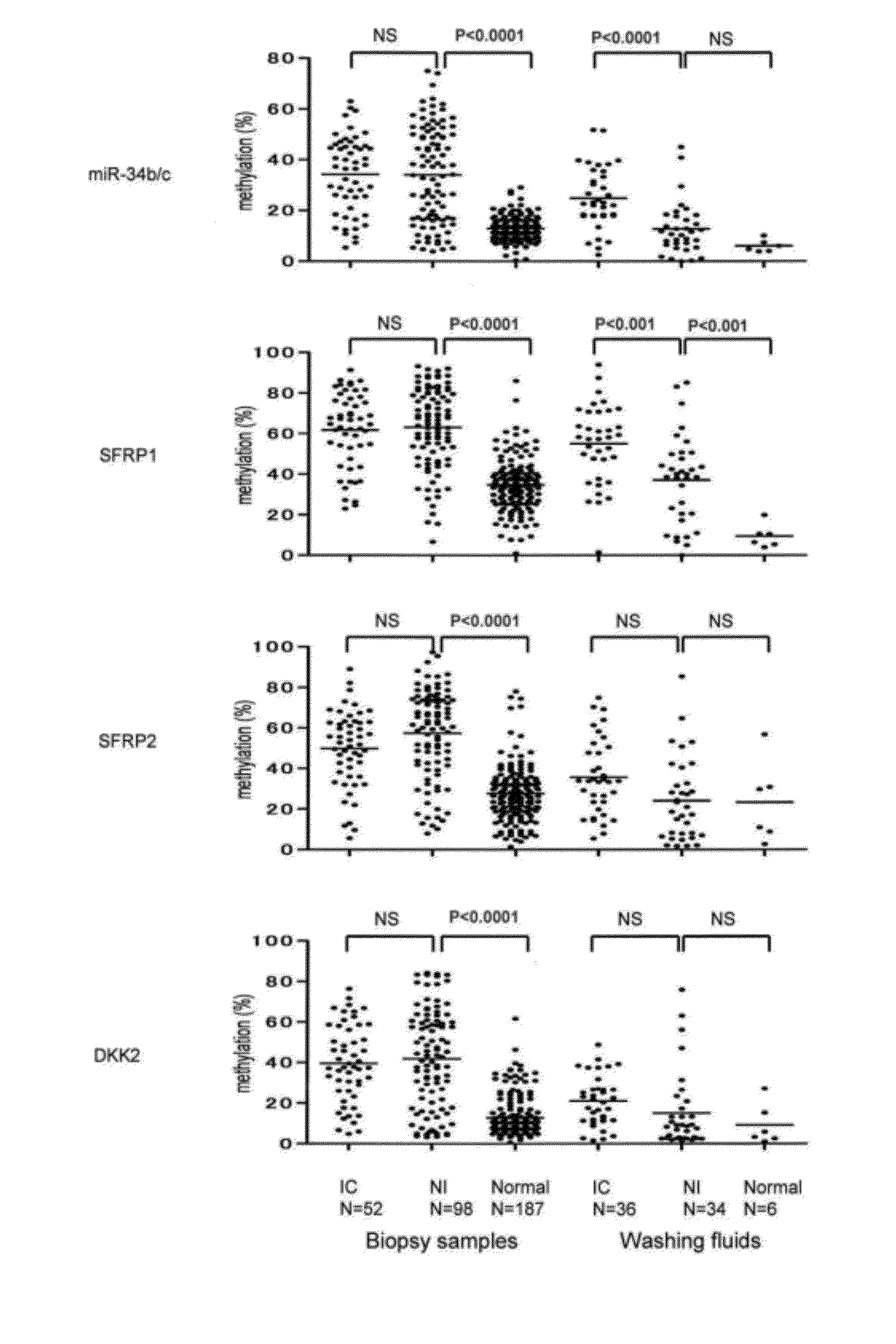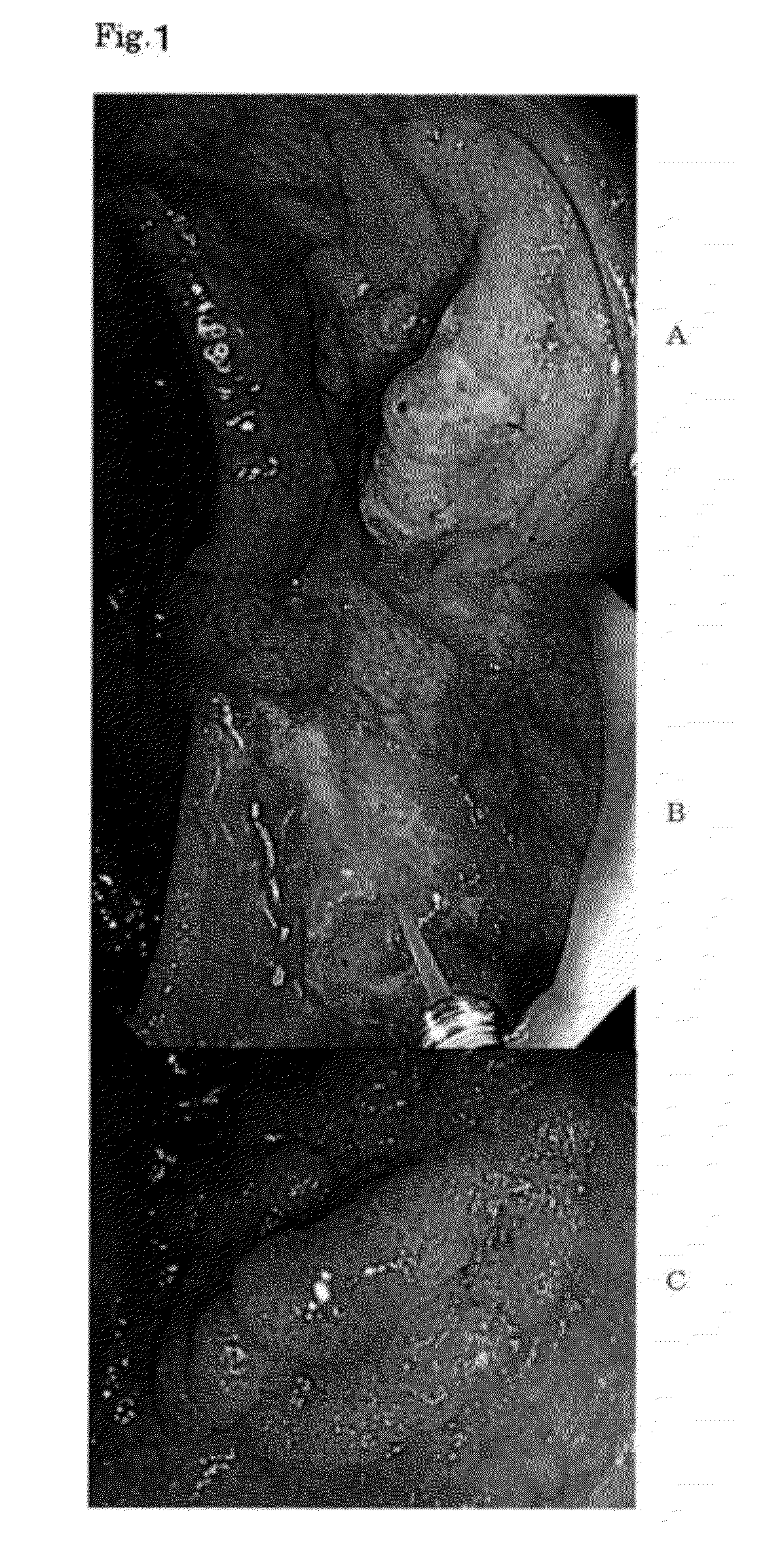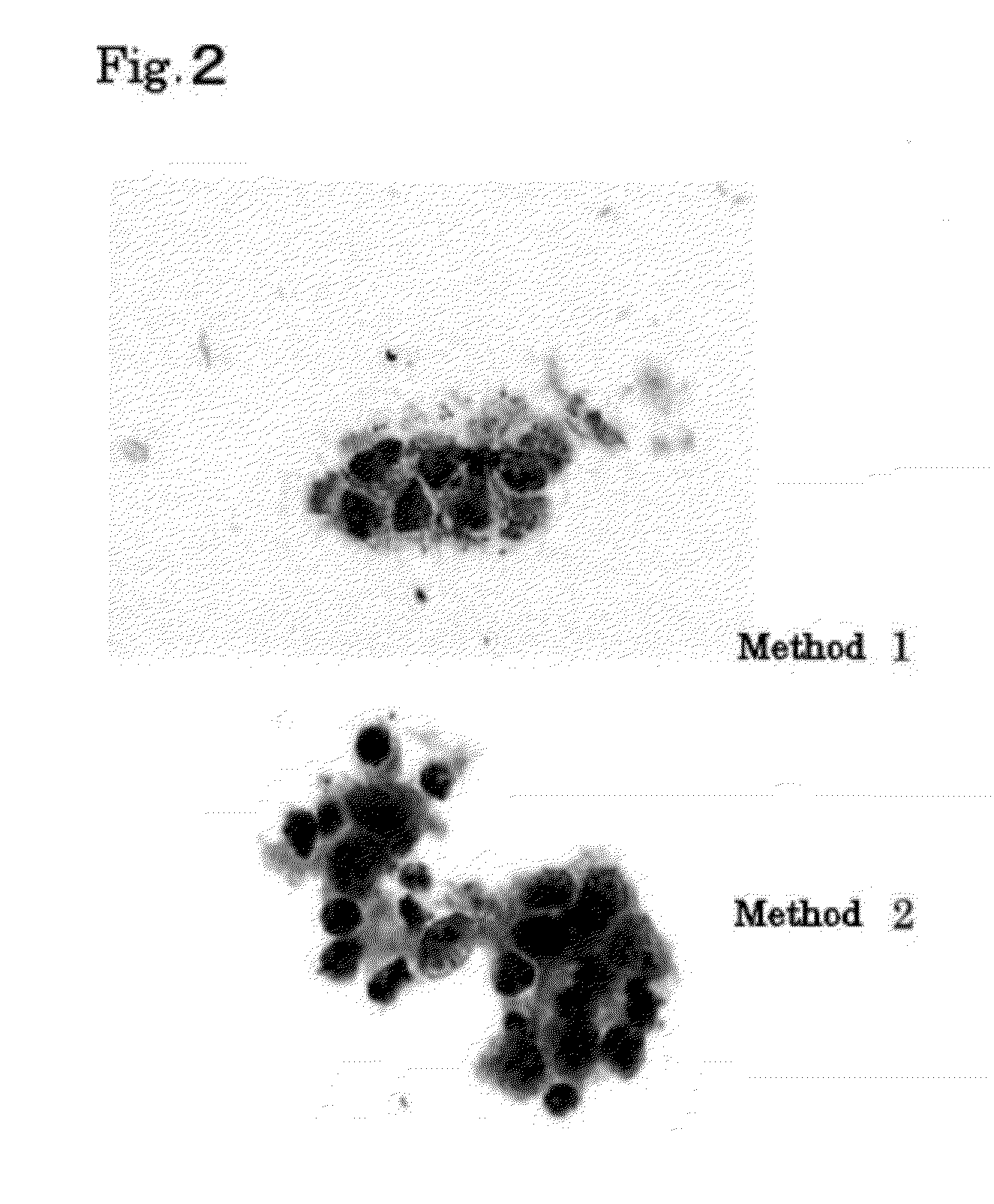Specimen for detecting infiltrative large intestine tumors
a technology for colorectal tumors and specimens, applied in the field of specimens for diagnosing invasive colorectal tumors, can solve the problems of increasing false-negative rates, reducing the effectiveness of occult blood tests, and inability to provide an index to determine the degree of invasion of cancer or tumors, etc., to eliminate the need for new equipment investment, accurate diagnosis of the degree of invasion, and easy collection of specimens
- Summary
- Abstract
- Description
- Claims
- Application Information
AI Technical Summary
Benefits of technology
Problems solved by technology
Method used
Image
Examples
example 1
Investigation of Collection Method of Specimens
[0137]The specimens were collected during November 2008 and June 2009 in the Digestive Organs and Endoscopy Center of the Akita Red Cross Hospital. The subjects from which the specimens were collected include patients who have had colonic adenomas for a long time and who took colorectal endoscopy for follow-up purposes, or patients who took the same for the purpose of pre-operation of colorectal cancer surgery, or those who took the same for detailed examination by reason of positive results of fecal occult blood tests in check-ups. Biopsy was carried out for 52 specimens of invasive tumor, 98 specimens of non-invasive tumor, and 187 specimens of normal mucosa. Mucous-layer detachment fluid was collected for 34 specimens of invasive tumor, 36 specimens of non-invasive tumor, and 6 specimens of normal mucosa. Table 1 shows characteristics of subjects from which specimens were collected.
[0138]“Hyperplastic polyp,”“adenoma,”“early cancer,”...
example 2
Measurement of DNA Methylation Level and Measurement of K-RAS Mutation
[0148]Next, DNA methylation level was measured for all cases. First, colonoscopy was performed and when a tumor was observed by colonoscopy of the entire large bowel, a washing fluid was sprayed by a Pyoktanin-spraying tube (NT tube, Olympus) from an adjacent position of the tumor to detach the mucus from the surface of the lumen of the large intestine. At this time, the washing fluid was sprayed onto the colonic mucous layer at a rate of approximately 5 ml / s.
[0149]Then, after observation by a magnified endoscope (CF-260AZI), background normal mucosae at the cancerous site of the tumor, adenoma site, and periphery of the tumor (within 1 cm) were collected by biopsy, and treated with EMR or marking, etc. The collected specimens were stored in endfresh, and after frozen storage, DNA extraction by phenol-chloroform method was performed.
[0150]The biopsy samples and colonic-mucous-layer detachment fluids collected were...
example 3
Endoscopic Classification
[0161]Tumor morphology of hyperplastic polyp, adenoma, and early cancer was classified into protruded type (0-I), flat type (IIa, LST), or depressed type (IIc, IIa+IIc) by colorectal endoscopy. Early cancer was defined as those wherein cancer invasion reaches the submucosa, regardless of venous invasion or lymphatic invasion. Borrmann classification was applied to advanced cancer. All the colorectal tumor surgery and EMR specimens underwent clinical diagnosis in accordance with WHO classification, at the Pathological Department of the Akita Red Cross Hospital.
PUM
| Property | Measurement | Unit |
|---|---|---|
| Flow rate | aaaaa | aaaaa |
| Content | aaaaa | aaaaa |
| Level | aaaaa | aaaaa |
Abstract
Description
Claims
Application Information
 Login to View More
Login to View More - R&D
- Intellectual Property
- Life Sciences
- Materials
- Tech Scout
- Unparalleled Data Quality
- Higher Quality Content
- 60% Fewer Hallucinations
Browse by: Latest US Patents, China's latest patents, Technical Efficacy Thesaurus, Application Domain, Technology Topic, Popular Technical Reports.
© 2025 PatSnap. All rights reserved.Legal|Privacy policy|Modern Slavery Act Transparency Statement|Sitemap|About US| Contact US: help@patsnap.com



